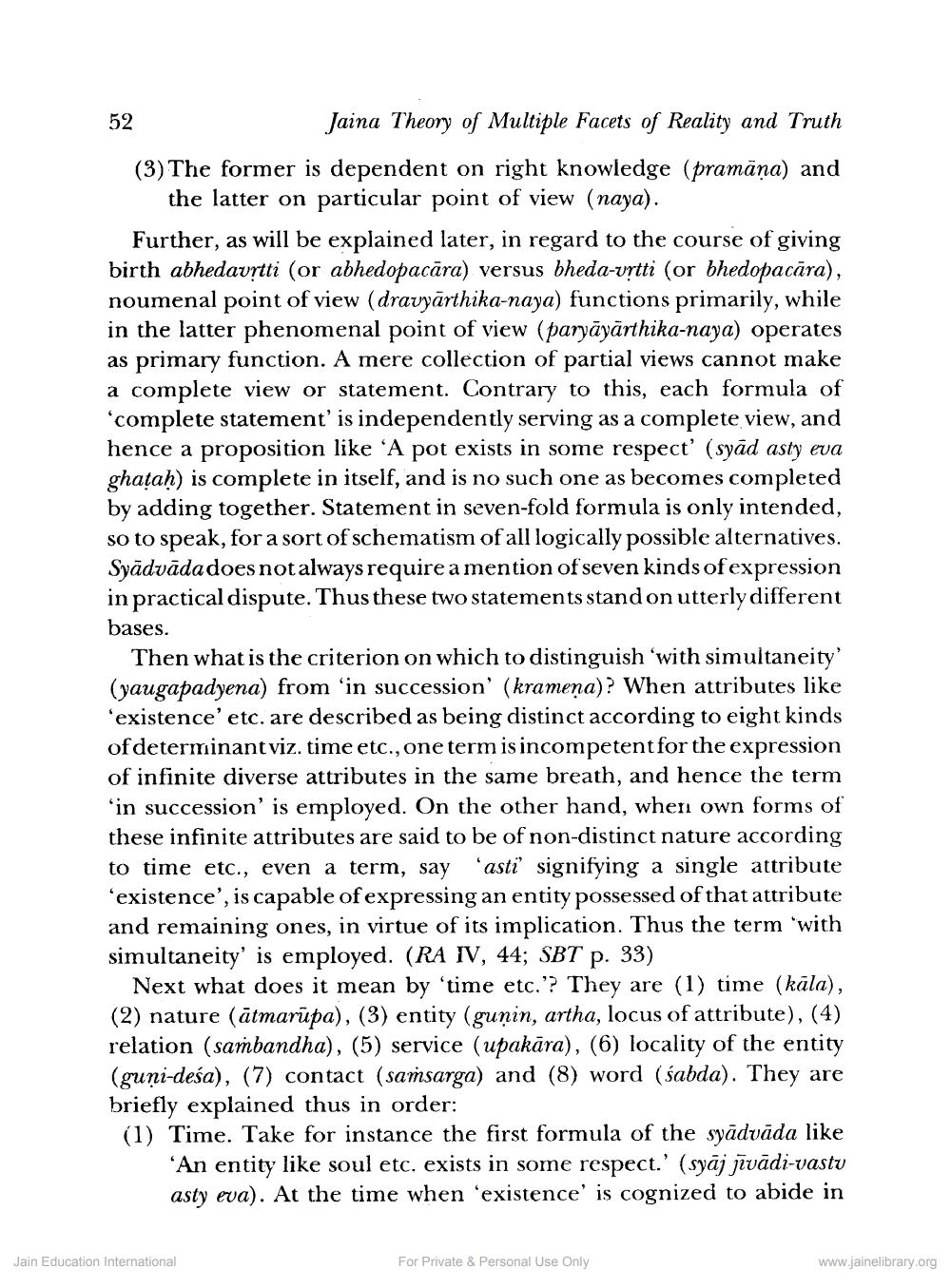________________
Jaina Theory of Multiple Facets of Reality and Truth
(3) The former is dependent on right knowledge (pramāna) and
the latter on particular point of view (naya).
52
Further, as will be explained later, in regard to the course of giving birth abhedavṛtti (or abhedopacāra) versus bheda-vṛtti (or bhedopacāra), noumenal point of view (dravyarthika-naya) functions primarily, while in the latter phenomenal point of view (paryayarthika-naya) operates as primary function. A mere collection of partial views cannot make a complete view or statement. Contrary to this, each formula of 'complete statement' is independently serving as a complete view, and hence a proposition like 'A pot exists in some respect' (syad asty eva ghatah) is complete in itself, and is no such one as becomes completed by adding together. Statement in seven-fold formula is only intended, so to speak, for a sort of schematism of all logically possible alternatives. Syadvāda does not always require a mention of seven kinds of expression in practical dispute. Thus these two statements stand on utterly different
bases.
Then what is the criterion on which to distinguish 'with simultaneity' (yaugapadyena) from 'in succession' (kramena)? When attributes like 'existence' etc. are described as being distinct according to eight kinds of determinant viz. time etc., one term is incompetent for the expression of infinite diverse attributes in the same breath, and hence the term 'in succession' is employed. On the other hand, when own forms of these infinite attributes are said to be of non-distinct nature according to time etc., even a term, say 'asti signifying a single attribute 'existence', is capable of expressing an entity possessed of that attribute and remaining ones, in virtue of its implication. Thus the term 'with simultaneity' is employed. (RA IV, 44; SBT p. 33)
Next what does it mean by 'time etc.? They are (1) time (kāla), (2) nature (ātmarupa), (3) entity (gunin, artha, locus of attribute), (4) relation (sambandha), (5) service (upakāra), (6) locality of the entity (guni-deśa), (7) contact (samsarga) and (8) word (sabda). They are briefly explained thus in order:
(1) Time. Take for instance the first formula of the syādvāda like
'An entity like soul etc. exists in some respect.' (syāj jīvādi-vastu asty eva). At the time when 'existence' is cognized to abide in
Jain Education International
For Private & Personal Use Only
www.jainelibrary.org




